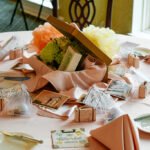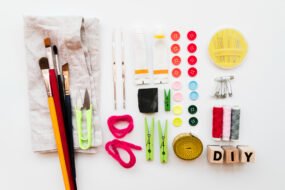
Woodworking is a timeless craft that allows you to create beautiful and functional pieces for your home. Whether you’re building custom furniture, crafting unique decor, or just tinkering with small projects, woodworking is a satisfying and rewarding hobby. This guide will walk you through the basics of DIY woodworking, from essential tools and materials to step-by-step projects you can try at home.
1. Getting Started: Tools and Materials
Before diving into your first woodworking project, it’s important to have the right tools and materials on hand. Here’s a list of essentials to get you started:
- Basic Tools:
- Measuring Tape: For accurate measurements.
- Pencil: To mark cut lines on wood.
- Square: Ensures your cuts and joints are perfectly straight.
- Saw: A handsaw or circular saw for cutting wood to size.
- Drill: A power drill with various bits for drilling holes and driving screws.
- Clamps: To hold pieces of wood in place while you work.
- Screwdrivers: Both flathead and Phillips for assembling projects.
- Hammer: For driving nails and assembling pieces.
- Sander or Sandpaper: To smooth out rough edges and surfaces.
- Chisels: For carving or cutting wood joints.
- Workbench: A sturdy surface to work on.
- Materials:
- Wood: Choose the type of wood based on your project. Pine is great for beginners, while hardwoods like oak and maple are more durable.
- Wood Screws and Nails: For assembling your projects.
- Wood Glue: To reinforce joints and seams.
- Finish: Varnish, stain, or paint to protect and enhance the appearance of your project.
2. Safety First: Essential Tips
Woodworking can be dangerous if proper precautions aren’t taken. Here’s how to stay safe:
- Wear Safety Gear: Always wear safety glasses to protect your eyes from flying wood chips and ear protection when using loud power tools. A dust mask is also important to avoid inhaling wood dust.
- Keep Your Work Area Clean: A cluttered workspace can lead to accidents. Keep your tools organized and clean up sawdust regularly.
- Use Tools Properly: Familiarize yourself with how each tool works and follow the manufacturer’s instructions. Never force a tool or use it for a task it wasn’t designed for.
- Work with Sharp Blades: Dull blades can cause tools to slip, leading to injury. Keep your saws, chisels, and drill bits sharp.
3. Beginner Woodworking Projects
Now that you’re equipped with tools and safety knowledge, it’s time to start crafting! Here are a few beginner-friendly woodworking projects to get you started:
A. Simple Bookshelf
A bookshelf is a functional project that’s perfect for beginners. Here’s how to build one:
- Materials:
- 2×4 lumber (cut to size)
- Wood screws
- Wood glue
- Sandpaper
- Paint or stain
- Steps:
- Cut the Lumber: Measure and cut four pieces of 2×4 lumber for the sides and shelves. The number of shelves and the height of the bookshelf are up to you.
- Assemble the Frame: Attach the sides of the bookshelf to the top and bottom pieces using wood screws and wood glue. Use clamps to hold the pieces together while the glue dries.
- Add the Shelves: Attach the shelves to the frame at the desired height using wood screws and glue.
- Sand and Finish: Sand the entire bookshelf to smooth out any rough edges. Apply a finish of your choice to protect the wood and enhance its appearance.
B. Wooden Picture Frame
This project is a great way to practice precise cutting and assembly:
- Materials:
- Thin wood strips (1×2 inches)
- Wood glue
- Sandpaper
- Picture frame glass (optional)
- Paint or stain
- Steps:
- Cut the Wood: Cut four strips of wood to the desired size of your frame. Miter the edges at a 45-degree angle so they fit together perfectly.
- Assemble the Frame: Apply wood glue to the mitered edges and clamp the frame together until the glue dries.
- Add a Backing: Cut a piece of wood or cardboard to fit inside the frame and attach it with small nails or screws. This will hold your picture in place.
- Sand and Finish: Sand the frame smooth, then paint or stain it to your liking. Insert your picture and glass (if using), and your frame is ready to hang!
C. Wooden Plant Stand
A wooden plant stand is a stylish and practical addition to any home:
- Materials:
- 2×2 lumber
- Wood screws
- Wood glue
- Sandpaper
- Paint or stain
- Steps:
- Cut the Wood: Measure and cut four pieces of 2×2 lumber for the legs and four more for the crossbars.
- Assemble the Base: Attach the crossbars to the legs using wood screws and glue, forming a sturdy base.
- Add the Top: Cut a piece of wood to fit the top of the stand and attach it to the base.
- Sand and Finish: Sand the entire stand smooth, then paint or stain it to match your decor.
4. Intermediate Projects for Growing Skills
Once you’ve completed a few beginner projects, you can challenge yourself with more complex builds. Here are a couple of intermediate woodworking projects to try:
A. Coffee Table
A coffee table is a more involved project that will teach you about joinery and working with larger pieces of wood:
- Materials:
- Hardwood lumber (cut to size)
- Wood screws and nails
- Wood glue
- Sandpaper
- Finish (paint, stain, or varnish)
- Steps:
- Build the Frame: Assemble the table’s frame using sturdy joints like mortise and tenon or dowels. Glue and screw the pieces together.
- Add the Top: Attach a solid wood top to the frame, ensuring it’s securely fastened.
- Add Legs: Attach legs to the frame, making sure they’re evenly spaced and level.
- Sand and Finish: Sand the entire table smooth, paying extra attention to the edges and corners. Apply a finish to protect the wood and enhance its appearance.
B. Wooden Bench
A wooden bench is a practical project that can be used indoors or outdoors:
- Materials:
- Hardwood lumber
- Wood screws and nails
- Wood glue
- Sandpaper
- Outdoor finish (for an outdoor bench)
- Steps:
- Build the Legs and Supports: Cut and assemble the legs and supports using sturdy joinery techniques. Glue and screw the pieces together for added stability.
- Add the Seat: Attach a wide, sturdy piece of wood for the seat, ensuring it’s securely fastened to the supports.
- Sand and Finish: Sand the bench smooth, then apply a finish to protect it from the elements if it’s going to be used outdoors.
5. Finishing Techniques
Once your woodworking project is assembled, it’s time to finish it. Here are some common finishing techniques:
- Sanding: Sanding is essential for smoothing out rough surfaces and edges. Start with coarse sandpaper and gradually move to finer grits for a smooth finish.
- Staining: Staining enhances the wood’s natural grain and color. Apply the stain with a brush or cloth, let it penetrate the wood, then wipe off the excess.
- Painting: If you prefer a more colorful finish, painting is a great option. Use a primer first, then apply two to three coats of paint for even coverage.
- Varnishing: Varnish provides a protective layer that enhances the wood’s natural beauty. Apply it with a brush, following the wood grain, and let it dry between coats.
6. Advanced Techniques and Tips
As you gain more experience, you can experiment with advanced woodworking techniques like:
- Joinery: Learn different types of wood joints, such as dovetail, mortise and tenon, and dowel joints, to create stronger and more intricate projects.
- Inlay Work: Inlay involves embedding different types of wood or materials into your project to create decorative patterns or designs.
- Wood Carving: Carving adds intricate details to your projects, whether it’s decorative motifs or functional features like handles.
Conclusion
Woodworking is a versatile and rewarding hobby that allows you to create custom furniture and decor for your home. Whether you’re a beginner or an experienced woodworker, there’s always something new to learn and create. Start with simple projects, gradually build your skills, and soon you’ll be crafting pieces you can be proud of.
Happy woodworking!








